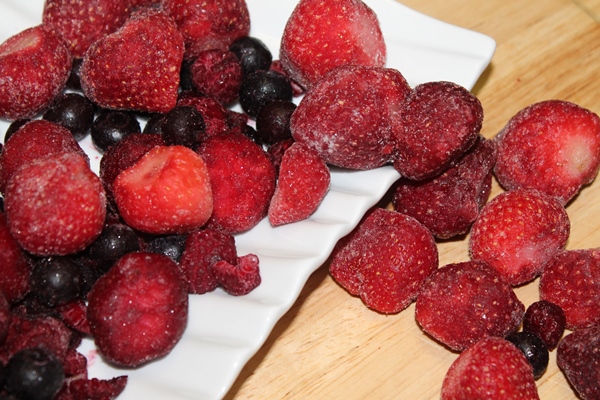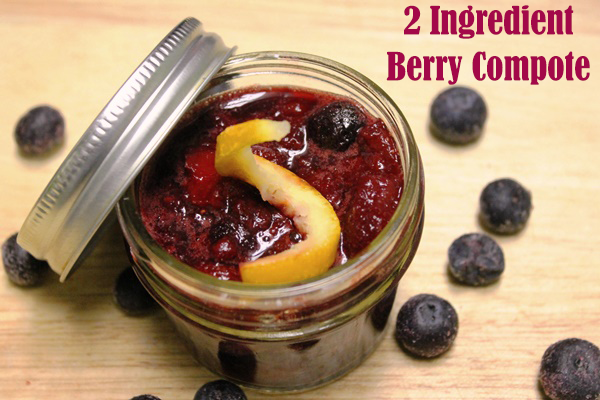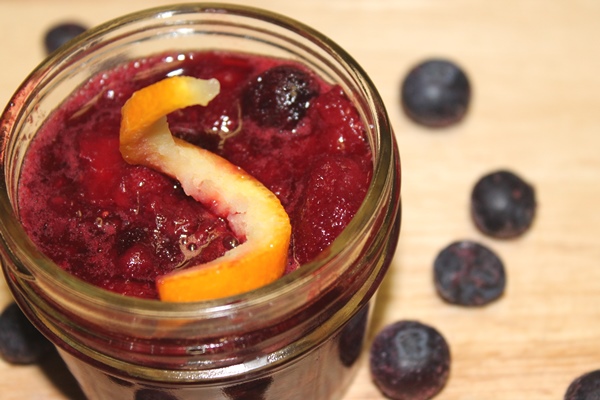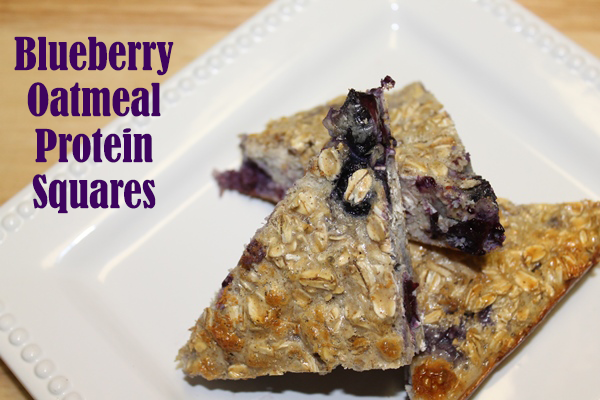With our first real taste of Old Man Winter last week, we’re all dreaming of warm, sunny days and sweet, melt-in-your-mouth produce…..but wait, it’s only January, bummer! However, just because it’s the dead of winter doesn’t mean we can’t enjoy juicy blueberries or succulent corn.
Nutritious. Affordable. Convenient.
We can easily enjoy the sweet flavors of summer year round by using frozen produce. While fresh, local produce that is in-season is always a great first option, there’s no reason to overlook the frozen food aisle to help supplement your fresh produce. Frozen produce is nutritious, affordable, and convenient…and not to mention it cuts down on wasted food since it won’t go bad if it gets tossed to the back of the freezer and forgotten about for a few days (or weeks).
Fresh vs Frozen
The key factor in determining the nutritional content of produce seems to be time. Once produce is picked, the level of vitamins and minerals starts to decline. The key factor in determining the nutritional content of #produce seems to be TIME. #saslife Click To Tweet
Most of the produce in the grocery store is picked before it’s fully ripe so that it wouldn’t be overripe by the time it made it to the shelves. This process cuts into the maturation of the produce and the ability of vitamins and minerals to fully develop.
Commercially frozen produce is picked at the peak of ripeness and often frozen and packaged within an hour of harvest. Chemicals are NOT used to freeze produce- the freezing process itself is preservative enough! Other than washing, cutting and, for vegetables, a quick blanching, frozen produce does not undergo any processing and, therefore, is not considered a packaged, processed food item which we generally suggest people limit.
A study by the British Frozen Food Federation found that levels of antioxidants in fresh and frozen produce were similar but antioxidants in fresh produce declined over time, reaching a low in as few as 3 days. In contrast, antioxidant and nutrient levels in frozen produce are in essence “frozen in time” and don’t deteriorate.
Overall, study after study has shown that the nutritional value of frozen produce is comparable to or higher than that of freshly picked produce so don’t avoid consuming a variety of produce year-round just because it’s frozen. You’ll be MUCH better off buying frozen strawberries in January versus fresh ones this time of year- they clearly aren’t growing anywhere near us so how far have they traveled to reach the grocery store?!
Key Message: Frozen produce can be just as nutritious as fresh produce…as long as you choose plain varieties without added sugars and other unnecessary ingredients.
Selecting Frozen Produce
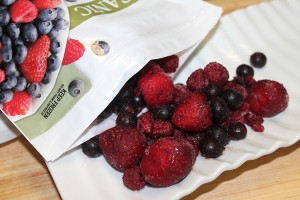 You can easily freeze your own produce at home by buying extra produce from local sources when it’s in season. To learn more about freezing fruits and vegetables at home, check out this post.
You can easily freeze your own produce at home by buying extra produce from local sources when it’s in season. To learn more about freezing fruits and vegetables at home, check out this post.
If you opt to take a little help from the store- why not?! There are lots of great options in the frozen food aisle. When choosing frozen fruits and vegetables, take a close look at the ingredient list. Opt for plain varieties without added sugars, sauces, and preservatives. You can add your own seasonings and flavors!
For example, when buying frozen broccoli, opt for one with ‘broccoli’ as the ingredient list…and maybe water and salt…NOT one with broccoli, modified corn starch, maltodextrin, dried bakers cheese, lactic acid, enzyme modified cheddar cheese, etc. If you must have cheese sauce on your broccoli, make your own!
Cooking with Frozen Produce
Some people worry about the texture and water content of frozen produce, but honestly they’re a fine substitution for fresh produce in most recipes.
Frozen fruits and vegetables work great in:
- Pancake, waffle or muffin batters
- Smoothies
- Oatmeal and Greek yogurt
- Stir-fry dishes
- Soups, stews and sauces
- Casseroles
- and more!
Also try roasting frozen vegetables in the oven. This helps bring back some of the life and texture of fresh vegetables. Simply toss vegetables in olive oil and seasonings of choice (salt, pepper, garlic, etc) and roast in a 400⁰F oven for 15-20 minutes or until edges start to caramelize.
Check out the two recipes below for ideas on adding a touch of natural summer sweetness into your winter meals.
Source:
Thalheimer, Judith. Treasures of Frozen Produce, Today’s Dietitian Magazine, November 2015 Issue
2 Ingredient Berry Compote
Recipe from: minimalistbaker.com
Makes 6 Servings
Ingredients
- 3 cups frozen or fresh fruit of choice (I used a combination of strawberries, blueberries and raspberries)
- 3 Tbsp freshly squeezed orange juice (juice from about one orange)
Optional Add-Ins
- ¼ tsp ground cinnamon
- ¼ tsp fresh or ground ginger
- 1 tsp Chia seeds (add after removing from heat)
Directions
- Place fruit and orange juice in a small saucepan over medium heat.
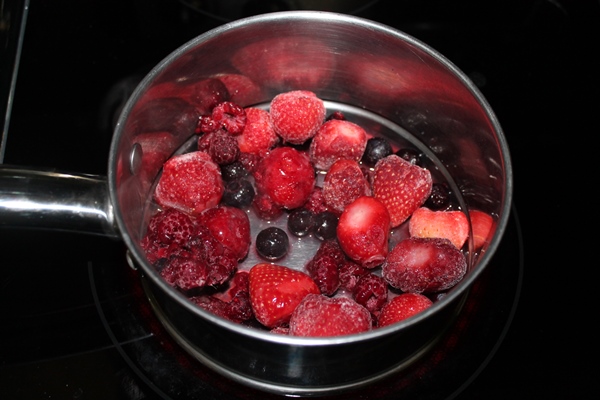
- Once bubbling, reduce heat to medium-low and use a wooden or sturdy silicon spoon to muddle and mash fruit.
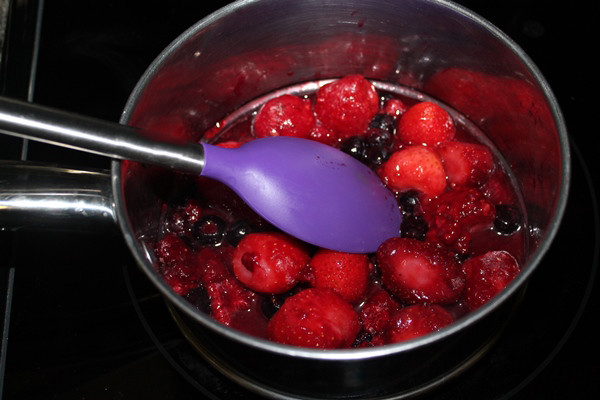
- Continue cooking for 10-12 minutes, occasionally mashing fruit to combine.

- Remove from heat and transfer to clean jar or container to cool thoroughly.
- Store in the fridge.
- Serve cold or reheated on French toast, waffles or pancakes (much better than syrup!), oatmeal, or plain Greek yogurt for a touch of natural sweetness.
Nutrition Information per Serving (~1/4 cup, without add-ins): Calories- 27, Total Fat- 0gm, Saturated Fat- 0gm, Chol- 0mg, Carbs- 6.3gm, Protein-0.5gm, Sodium- 1mg
Blueberry Oatmeal Protein Squares
Recipe from: Food Solutions Magazine, Sept 2014
Makes 9 Squares
Ingredients
- 3 cups old fashioned oats, dry
- 2 tsp baking powder
- 4 tsp ground cinnamon
- 2 cups whey protein powder (full measuring cup, not scoops)- read here about how to choose a clean, good quality whey protein powder
- 1 ¾ cup milk of choice (cow’s, unsweetened almond, etc)
- ½ cup unsweetened applesauce
- 2 Tbsp coconut oil, melted
- 2 tsp vanilla extract
- 2 whole eggs
- 2 cups frozen or fresh blueberries
Directions
- Preheat oven to 350⁰F. Grease 11x7 baking pan.
- Mix oats, baking powder, cinnamon and protein powder.
- In a separate bowl, mix milk, applesauce, melted coconut oil, vanilla and eggs.
- Combine contents of both bowls and mix well.
- Gently fold in blueberries. Pour into baking pan.
- Cook 15-20 minutes or until set.
- Let cool completely before cutting into bars.
Notes
- Cut into 9 squares if you are planning to use these squares as a meal replacement.
- Cut into 18 squares if you are planning to use these squares as a snack.
Nutrition Information per Serving (meal replacement size): Calories- 260, Total Fat- 8gm, Saturated Fat- 4.5gm, Chol- 70mg, Carbs- 28gm, Protein-21gm, Sodium- 190mg
Nutrition Information per Serving (snack size): Calories- 130, Total Fat- 4gm, Saturated Fat- 2gm, Chol- 35mg, Carbs- 14gm, Protein-10.5gm, Sodium- 95mg
Click here for a printer-friendly version of these recipes.
Click here for a printer-friendly version of this blog post.
